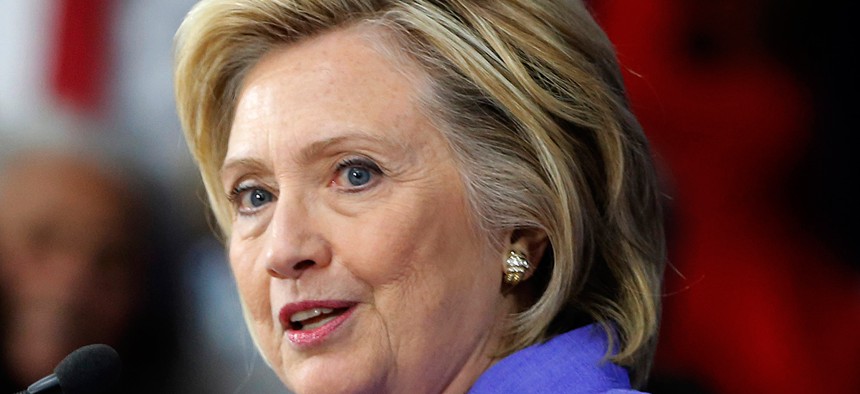Clinton Wants to Eliminate Student Loans For Public Colleges and Universities
The candidate says she doesn't want the government making money off of student loans.
Presidential elections have a way of forcing much-needed policy discussions. And reforming the way we pay for college and tackling the $1.2 trillion student debt load is shaping up to be one of the most important issues in the 2016 race—particularly among the pivotal group of younger voters.
On Monday (Aug. 10), Democratic frontrunner Hillary Clinton unveiled a proposal aimed at cutting college debt loads and allowing students to attend four-year public colleges and universities without taking out loans for tuition. (Clinton’s Democratic contenders Martin O’Malleyand Bernie Sanders have already released their own plans for a debt-free college education).
The plan calls for “significantly cutting the interest rate on student loans so the government never profits when students borrow,” according to materials put out by her campaign.
Clinton’s proposal (read full details here) borrows aspects from both left and right-leaning proposals. But it comes with a hefty price tag: $350 billion over 10 years. Clinton said the program would be paid for by closing tax loopholes and expenditures for the wealthy—a pool of funds President Obama has highlighted in previous budget plans. It also ramps up the level of scrutiny and accountability required of colleges and universities, which have largely skirted responsibility for the student loan excess.
About half of the money in Clinton’s proposal will be disbursed in the form of grants made to states and colleges, which, in return, have to guarantee no-loan tuition at four-year public colleges and no payments for tuition at community colleges.
A third of the funds will go toward cutting student loan interest rates by “nearly half” and refinancing current loans at today’s lower interest rates. The remaining funds will go toward creating a so-called innovation fund to provide for things like financial aid for online courses and programs that reward college accountability, such as making sure students complete their degrees. She also aims to expand educational benefits to veterans and students who do national and community service.
There is vocal, bipartisan support for the general idea of overhauling the way Americans pay for education but Republicans and Democrats clash on how much of the tab the government should pick up. The debate is likely to get even more heated this fall as Congress gears up to begin the process of reauthorizing the Higher Education Act, the 1965 law that governs federal aid programs, and gain even more steam during the primaries for the 2016 election.
NEXT STORY: Why We Hide From Feedback







